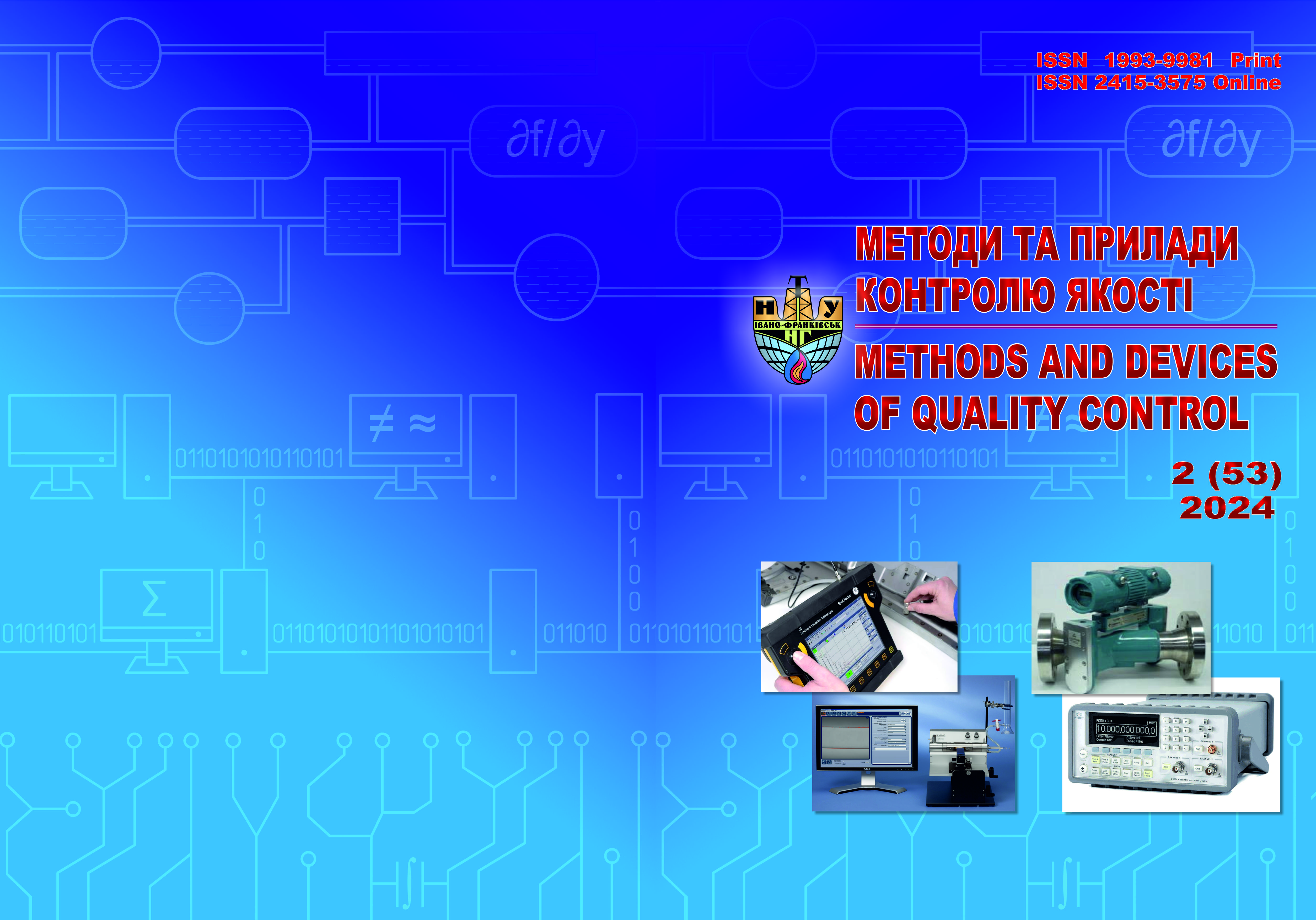ПРОГНОЗУВАННЯ ВИНИКНЕННЯ ДЕФЕКТІВ ГНУТИХ ПРОФІЛІВ
DOI:
https://doi.org/10.31471/1993-9981-2024-2(53)-16-22Ключові слова:
дефекти, класифікація, якість, сортамент, матеріали, покриття, неруйнівний контроль, вимірювання, властивості матеріалівАнотація
Зростання споживання гнутих профілів, що спостерігається за останнє десятиліття у різних галузях виробництва та будівництва, вимагає пошуку нових технологічних рішень та застосування нових матеріалів, що забезпечують високу якість виробів за мінімальних витрат у процесі виробництві. Широке застосування профілів у будівництві (декоративні стінові та покрівельні панелі зовнішнього виконання, внутрішні декоративні панелі, силові несучі конструкції) зумовлює високі вимоги до їх захисно-декоративних властивостей, що досягається застосуванням відповідних покриттів. Гнуті сталеві профілі набули значного поширення в машинобудуванні та інших промислових галузях за останні роки. Вони слугують основою для різноманітних конструкцій — від простих огорож до складних механізмів і машин. Від їхньої якості залежить міцність, довговічність і безпека готових виробів. В даний час широке застосування знаходять процеси безпосереднього виготовлення профілів з листового матеріалу, який має багатошарове покриття, що вже нанесене у промислових умовах. Таке покриття має високі характеристики міцності, широку кольорову гаму і відмінну корозійну стійкість. Виготовлення профілю з такого матеріалу є більш ефективним, ніж нанесення покриття на вже готовий профіль. Інтенсифікація формоутворення дозволяє зменшити кількість технологічних переходів, забезпечити здешевлення обладнання, підвищити його мобільність, компактність, економічність, знизити витрати на площі, яке воно займає, зменшити час переналагодження та ін. Отже, важливо знати, яким чином визначати якість гнутих профілів перед їх використанням. До основних переваг гнутих профілів відносяться: необмежений сортамент поперечних перетинів гнутих профілів, що отримуються профілюванням; висока продуктивність виробництва; можливість деформаційного зміцнення матеріалу, яке обумовлено особливостями процесу профілювання. Разом з перевагами, мають місце досить високі витрати через наявність браку. Ці обставини потребують аналізу причин, які можуть призвести до виникнення дефектів гнутих профілів. У роботі представлена класифікація дефектів гнутих профілів та перелік можливих причин їх виникнення, що є важливим та актуальним завданням щодо аналізу технологічних процесів виробництва гнутих профілів та забезпечення контролю їх якості.
Завантаження
Посилання
Erfani Moghadam A. Flexible Roll Forming of the Variable Depth Profiles. Submitted in fulfilment of the requirements for the degree of Masters of Research, Institute for Frontier Materials Deakin University, 2017. 159 р.
Halmos T. Roll Forming Handbook. Edited by George T. Halmos Boca Raton: Taylor&Francis. 2006. 583 р.
Zhao W. Finite element analysis and fracture forecast of U channel flexible roll forming. Adv Mat Res. 683. 2013. Р. 604-607.
Kasaei M.M., Moslemi Naeini H., Liaghat G.H. Revisiting the wrinkling limits in flexible roll forming.The Journal of Strain Analysis for Engineering Design. Vol. 50(7). 2015. Р. 529-541.
Halmos T. Roll Forming Handbook. Boca Raton: Taylor&Francis. 2006. 583 р.
Mahajan P. FE Simulation of roll forming of a complex profile with the aid of steady state properties. Steel Research International. 2018. Vol. 89, No. 5.
Halmos T. Roll Forming Handbook. Boca Raton: Taylor&Francis, 2006. 583р.
Abeyrathna B., Rolfe B., Hodgson P., Weiss M. Local deformation in rollforming. The International Journal of Advanced Manufacturing Technology. 2017. Vol. 88, No. 9–12. P. 2405-2415.


.png)




